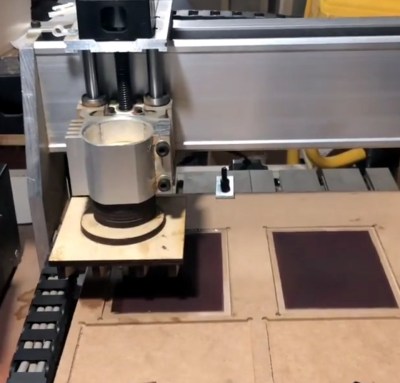For all intents and purposes, photography here in 2024 is digital. Of course chemical photography still exists, and there are a bunch of us who love it for what it is, but even as we hang up our latest strip of negatives to dry we have to admit that it’s no longer mainstream. Among those enthusiasts who work with conventional black-and-white or dye-coupler colour film are a special breed whose chemistry takes them into more obscure pathways.
Wet-collodion plates for example, or in the case of [Jon Hilty], the Lumière autochrome process. This is a colour photography process from the early years of the twentieth century, employing a layer of red, green, and blue grains above a photosensitive emulsion. Its preparation is notoriously difficult, and he’s lightened the load somewhat with the clever use of CNC machinery to automate some of it.

His web site has the full details of how he prepares and exposes the plates, so perhaps it’s best here to recap how it works. Red, green, and blue dyed potato starch grains are laid uniformly on a glass plate, then dried and pressed to form a random array of tiny RGB filters. The photographic emulsion is laid on top of that, and once it is ready the exposure is made from the glass side do the light passes through the filters.
If the emulsion is then developed using a reversal process as for example a slide would be, the result is a black and white image bearing colour information in that random array, which when viewed has red, green, and blue light from those starch filters passing through it. To the viewer’s eye, this then appears as a colour image.
We can’t help being fascinated by the autochrome process, and while we know we’ll never do it ourselves it’s great to see someone else working with it and producing 21st century plates that look a hundred years old.
While this may be the first time we’ve featured such a deep dive into autochrome, it’s certainly not the first time we’ve looked at alternative photographic chemistries.
